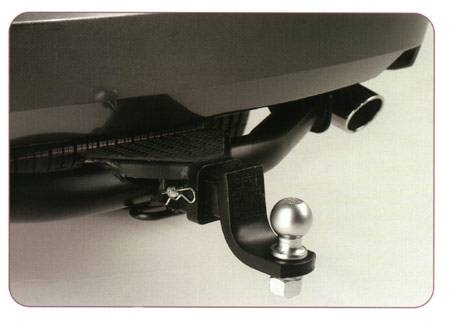
Adding a tow hitch to a vehicle will allow it to pull trailers, and this process has been standardized to accommodate any size of car or truck. There are two main types of trailer hitches, the frame-mounted and bumper-pull styles. Each has its advantages, and adding one to a vehicle will take the average backyard mechanic about an hour.
Determine what type of trailer hitch will work best. A bumper-pull ball hitch would work for trucks or SUVs that already have a bumper with an installation hole predrilled. A smaller frame-mounted hitch (square hole) would work best for a modern subcompact car with smooth plastic bumpers.
Locate pre-existing trailer wiring, or wire an appropriate connection plug to the taillights of the vehicle. Most trucks and SUVs will have trailer wiring on the underside of the rear bumper, either running to a socket or loose and taped together. On these wires will be a taped color scheme, showing the function of each wire. OEM trailer wire colors may vary, but the ground wire is typically white. There should be four functions for the trailer lighting: "Stop," Right Turn," "Left Turn" and "Dimmer Parking Lights."
Install the towing hitch. If using a bumper-pull ball hitch, slide the main ball shaft into the hole on the bumper and fasten with the locking washer and nuts provided. If installing a frame-mount hitch, locate the predrilled holes in the frame, underneath the vehicle and on the inside frame rail. Most times, these holes (drilled mostly for impact crush zones) will match up with the model of hitch for the vehicle, but on the rare occasion these holes must be drilled. Position the hitch so that it can take a trailer without interfering with the vehicle's bumper or tailpipe, then mark the hole locations on the frame. Drill these points to the exact size of the bolts to be used, then mount the hitch to these holes. The metal-to-metal connection should be direct and solid, with no gaps or misaligned parts.
Test the hitch on a low speed road with an empty trailer to ensure it has been installed successfully. The trailer should have full agility, and be able to swing to each side without obstruction.